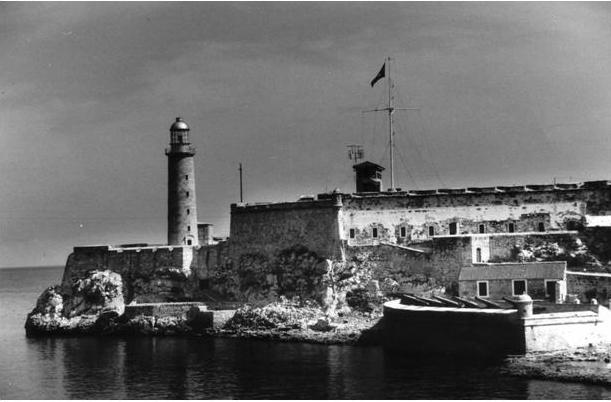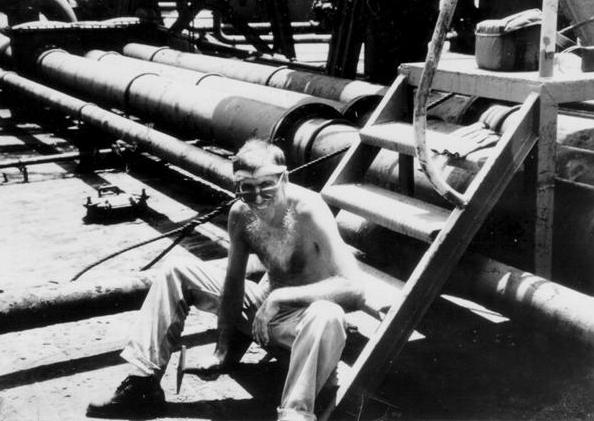A Sea Glimpse of Cuba in the early 90s
By Circles Robinson
HAVANA TIMES, Jan. 3 – I spent New Years Day enjoying the book “Cuba at Sea” by Ron Ridenour who back in the early 1990s traveled on different Cuban cargo ships.
Passenger traveling around Cuba and abroad by sea was something from another era, but Ron, a US citizen, insisted on getting the chance, doing volunteer work along the way and writing about it.
In a period of six months he ventured around the long narrow island on the Seaweed oil tanker, a freighter called the Shark, and back and forth across the Atlantic on the Giorita and Rose Islands cargo ships.
Ron recounts his experiences with Cuban officers and sailors during that crucial period when the highly dependent Cuban economy began a free fall with the collapse of the Soviet Union and East European Socialist camp.
The author has granted HT permission to run several excerpts from the book published in Great Britain in 2008 by Socialist Resistance. Today we bring you the first installment.
HEADING OUT OF HAVANA
From Cuba at Sea by Ron Ridenour
We were casting off. I responded joyfully and quickly alongside my new colleagues to the boatswain and second mate’s orders, heaving in mooring lines, wrapping the whirling, deadly ropes fast around bitts, cranking in the two 7.5-ton anchors-and we were veering out.

Two small powerful tug boats pushed us out through the harbor. We glided past the Morro Castle and its lighthouse. This stone fortress, located on the eastern corner of the harbor entrance, was in construction for over a century. It was finally finished in the mid-1700s. The Spaniards used it as protection against enemies. The lighthouse sits atop a circular tower 25 meters tall. Its modern light beam rotates every eight minutes and can be seen from 50 nautical miles.
I was exhilarated as we passed by the Malecon seawall and the tall apartment building where I lived, Edificio Focsa, on the 26th floor.
The engine fell silent as the pilot hopped onto a launch alongside our hull. All ports provide pilots to guide all ships in and out of harbors as a precaution against accidents, at least in Cuba. The captain took over command and sounded three long blasts on the horn. At the sound of the first deafening blast, I ducked and the men laughed. This was the captain’s signal to the pilot that we were heading out: course 085 degrees to Matanzas.
I walked across the forecastle and climbed to the bow stem. I faced the vast azure horizon, puffy white clouds and orange-yellow sun. I inhaled fresh wind and listened to the rippling waves the bulb makes with its submarine-like nose just under the surface. Here, there is no ear-piercing human racket, no noxious traffic threatening health and limb. I wished to be that fantasy animal that can live in the sea and on land, under the sea and in the air.
Everything was so new and exciting that I slept little the first evenings. Throughout our voyage, I pitched in on bridge watches, deck maintenance, and assisted with cleaning the engine room. I accompanied the lone donkeyman when unloading at electric plants and cement factories, and loading at refineries. Body discomfitures were soothed by the ever-hypnotizing deep and the swaying vessel.
Seaman’s life is mostly maintenance and cleaning. A modern ship is so automated, even these old tankers, that a helmsman is usually not needed when no close to land and when there is little traffic. So helmsmen are assigned to scrape and clean with the deckhands. Even the officers, who conduct four-hour watches, have little to do.

They plot courses, making mathematical calculations on charts and making slight bearing adjustments. Not even the captain is necessary most of the time. Of course, the captain is the person to blame when something goes wrong. But his actual duties are limited. Captain Marrón, however, is an energetic man who participated in many tasks. The first mate and the chief engineer are the busy men. The chief’s area of responsibility is always in trouble, and the first mate must oversee the boatswain and deckhands, the kitchen and chamber personnel, and the purser. He also takes charge of many financial transactions, receives the manifesto, the supplies, doles out punishments and, along with the captain, grants shore leaves. The captain can intervene at any moment in any area, but rarely does.
I spent a lot of time around the boatswain Leon on our voyages. The boatswain managed the deckhands, with whom he worked much of the time, and he was my tutor. He took time to explain merchant marine training, work conditions and fleet history.
Cuba hardly had a shipping fleet and no fishing fleet before the revolution. Then, it only had 14 cargo ships-the largest was 7000 tons-and three small tankers which transported molasses. Cuba relied on United States vessels for shipping. In the first five years of revolution, the socialist government bought a score of ships.
By the 1990s, it owned 100 general cargo ships, including container vessels, 17 tankers and a couple dozen large fishing vessels that process fish at sea. Cuban waters are home for many varieties of delectable fish and shellfish. Local fishermen catch large quantities of queen lobsters while long distance fishermen bring in the largest quantities of fish for export. Fish products comprise a sizable amount of national income in hard currency. Few natives, however, eat fish. This is both a question of habit and offer. The ministry of internal commerce makes little effort to offer fish to the public. Refrigeration, among other things, is a problem.
Cuba has bought ships not only from the COMECON countries and China but also from Japan, Canada, England, Spain and the Nordic countries. Its tankers are usually limited to transporting petroleum products refined at Havana and Santiago de Cuba to national ports and nearby countries, making the coasting trade. A handful of tankers transport chemical acids and molasses.
Most of the ships specialize in transporting one product because cleaning the tanks of crude black petroleum derivatives is costly and time consuming. A few ships carry lighter petroleum products, such as: gas, kerosene and naphtha. The entire fuel fleet has a total capacity of only 100,000 tons, hardly what the largest modern tanker can carry. The former Soviet used to send 300 ships-with a deadweight of 80,000 tons or more-with fuel to Cuba annually, up to 13 millions tons of oil in 1989. A score of Cuban ports receive petroleum products, another score handle general cargo, sugar, cement and minerals. Only a few ports are reserved for fishing and naval usage.

Before the revolution there was no formal education for seamen. Since the 1970s, the usual way to become a seaman is to take the six month course at the Seamen’s College, which is open to all over 17 years of age. The training, like all education in Cuba, is free. Here one learns the trade’s terminology, how to tie knots, to walk on ship and swim in the sea, how to put out fires and what to do if an accident occurs or if the ship sinks. The student also learns how the ship functions in a broad sense, and then specializes in one of the departments: deck, engine room, donkeyman, kitchen and chambers, and communications. To become a bridge officer, engineer or electrician one has to pass five years of instruction at the Naval Academy. Prerequisites for captaincy conform with universal standards.
General conditions for merchant marines are superior to most all other jobs. Wages are above the national average, from a low of 141 for service workers and 161 pesos for seaman up to 355 for captain (1990s scale). Everyone receives additional bonuses of 5 to 15% when sailing plus extra pay for seniority, hazardous duty, long trips and when work quotas are met. Food is varied, plentiful and free. When traveling abroad warm clothing is provided to all. Every 90 days workers are entitled to 25 days rest plus 10 days vacation. There are complaints, however, that the 90 days sailing time is often extended without consultation. When one’s leave is due, the company must provide transportation to return the sailor home.
A nurse of doctor is always aboard cabotage trips; and always a doctor, usually with a nurse, on long distance voyages. Until the 1990s, ships also employed a politico, a political officer or social-education director. He or she offered information and political briefings to the crew, gave Communist party advice to the captain, and arranged recreation and sports activities.
Tankers provide important services for society but the work is monotonous, risky and stressful. One lives in a potentially dangerous environment. One must always be cautious not to cause fires and explosions, not to solder or produce sharp blows in many places, not to smoke where forbidden. One must be disciplined and calm.
Though most sailors do not appear insecure or tense, asthma and hypertension among the most common illnesses treated. Leon was healthy in body and mind, in part, because of his seaman philosophy. A ship is a small town, a world unto itself. If you like that world everything is fine, or at least tolerable; if you don’t, then you feel sad and become sick. Leon put it this way: “You must love your ship and the sea. The ship is your house; the captain your father; the crew your family; the sea your world.”
To purchase a copy of the book you can place an order with Amazon (www.amazon.co.uk/Cuba-at-Sea-Ron-Ridenour/dp/0906378028), Socialist Resistance (www.resistancebooks.blogspot.com/http) or write the author at Soderupvej 1, 4330 Havalsoe, Denmark.





